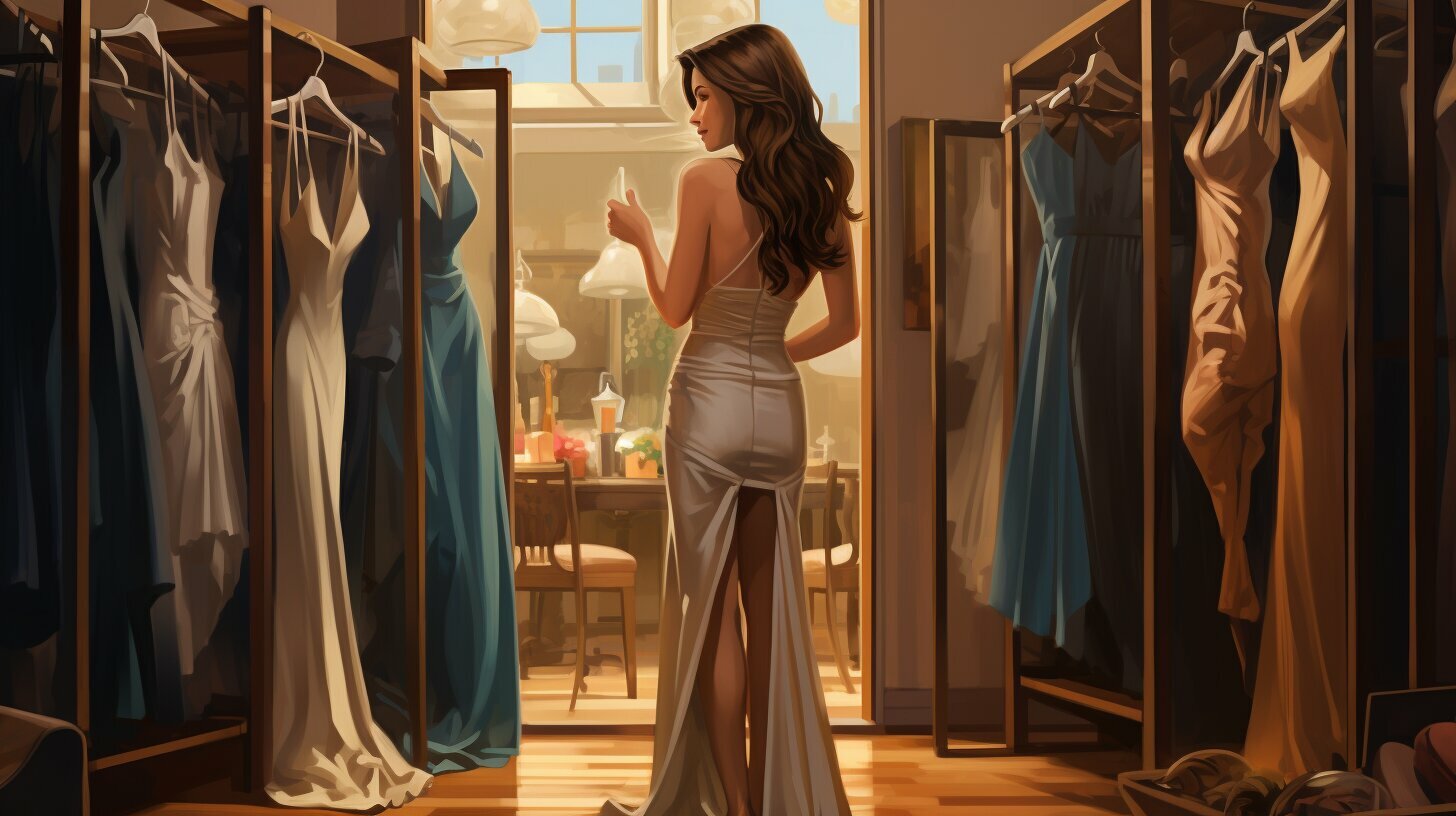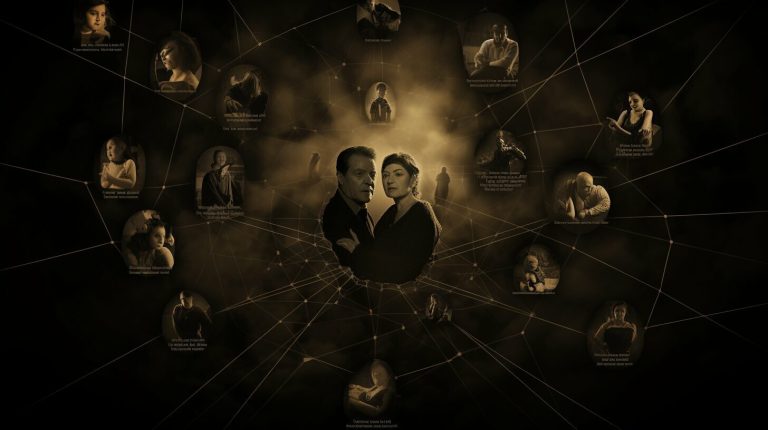Uncovering the Reasons: Why Do Women Wear Dresses?
Have you ever wondered why women wear dresses? In this article, we will delve into the fascinating world of fashion and uncover the reasons behind this popular clothing choice.
Key Takeaways:
- Dresses are associated with both modesty and femininity.
- Wearing dresses can be a way for women to reclaim their femininity and challenge traditional gender norms.
- Dresses can be more flattering and comfortable than pants, as they can help conceal certain body areas.
- Wearing dresses can also be a means of expressing individuality and challenging societal norms.
- It’s important to respect each woman’s personal choice and agency when it comes to wearing dresses.
The Cultural Significance of Dresses
Dresses have long held deep cultural significance, symbolizing femininity and grace. From ancient civilizations to modern times, women’s fashion choices have been shaped by societal expectations and evolving trends. Throughout history, dresses have been worn by women across various cultures as a way to express their identity and conform to the cultural norms of their time.
“Fashion is the armor to survive the reality of everyday life,” said renowned fashion designer Bill Cunningham. This quote highlights the transformative power of dresses in enhancing a woman’s confidence and self-expression. Dresses not only serve as a form of creative expression but also as a means to convey one’s status, culture, and personal style.
In different cultures and time periods, the design, color, and fabric of dresses have carried symbolic meanings. For instance, in ancient Greece, white dresses were associated with purity, while in medieval Europe, dresses with intricate embroidery and embellishments were a sign of wealth and social status. Today, dresses continue to be an essential part of a woman’s wardrobe, reflecting her personal taste and cultural heritage.
| Key Points: |
|---|
| Dresses symbolize femininity and grace |
| They have been shaped by societal expectations and evolving trends |
| Different cultures and time periods have attached symbolic meanings to dresses |
| Dresses serve as a form of creative expression and convey personal style |
Exploring Psychology: Why Dresses Matter
The choices we make in clothing often have deeper psychological roots. When it comes to dresses, societal norms and personal expression come into play, influencing the styles and designs women are drawn to. The psychology behind dress choices is multifaceted, influenced by a range of sociocultural factors.
For many women, dresses are associated with femininity and can be a way to express and embrace their gender identity. Throughout history, dresses have been seen as the epitome of femininity, and wearing them can be a means of reclaiming power and challenging traditional gender norms. By choosing to wear dresses, women can assert their individuality and reject societal expectations.
In addition to their cultural significance, dresses also offer practical advantages. Many women find dresses to be more flattering and comfortable than pants, as they can help conceal areas of the body they may be self-conscious about. The flowy and forgiving nature of dresses can provide a sense of ease in movement and offer a stylish solution for both formal and casual occasions.
Table: Sociocultural Factors Influencing Dress Preferences
| Sociocultural Factor | Impact on Dress Choices |
|---|---|
| Media and Advertising | Influence trends and shape perceptions of fashion |
| Community and Peer Pressure | Desire to fit in or stand out within social circles |
| Personal Identity | Expression of individuality, personal style, and values |
| Cultural and Religious Beliefs | Guidance and adherence to specific dress codes |
It is important to recognize that every woman’s motivations for wearing dresses are unique. Some may choose dresses for their aesthetic appeal, while others may find comfort and practicality in them. Respecting each woman’s personal agency and understanding the sociocultural factors that influence dress preferences are key to fostering inclusivity and embracing the diverse choices women make.
Embracing Femininity: Reclaiming Power Through Dresses
In a society that often values traits associated with masculinity, wearing dresses can be a powerful way for women to reclaim their femininity and assert their identity. Throughout history, women have donned dresses as a means of embracing their womanhood and challenging traditional gender norms. The historical evolution of women’s dresses reflects the changing perceptions of femininity and the desire to express individuality.
One of the reasons why dresses hold such significance is their association with both modesty and femininity. Dresses have been a staple in women’s fashion for centuries, symbolizing elegance and grace. They continue to be seen as the epitome of femininity, allowing women to embrace their inherent beauty and celebrate their unique curves. Wearing a dress can empower women to feel confident and comfortable in their own skin, as they embrace their natural femininity.
Moreover, dresses offer practical advantages that contribute to their enduring popularity. They can be more forgiving in concealing certain body areas that women may be self-conscious about, such as the thighs, hips, and stomach. Dresses also provide a sense of ease in movement and airflow, offering comfort during everyday activities or special occasions. This combination of style and comfort makes dresses a preferred choice for many women, allowing them to feel both fashionable and at ease.
Expressing Individuality and Challenging Societal Norms
Wearing dresses goes beyond aesthetics; it can also be a powerful means of expressing individuality and challenging societal norms. By choosing to wear dresses that deviate from mainstream fashion, women can assert their unique sense of style and carve out their own identity. It’s a way of breaking free from the constraints of societal expectations and embracing one’s personal preferences.
Each woman has her own reasons for wearing dresses, whether it be for cultural, personal, or practical purposes. It is crucial to respect and honor these choices, recognizing that they are an expression of self and a way to reclaim power. In a world that often imposes rigid gender roles, wearing a dress can be a statement of agency, strength, and resilience.
| Reasons for Wearing Dresses | Benefits of Wearing Dresses |
|---|---|
| Embracing femininity | Confidence and comfort |
| Challenging gender norms | Concealment of body areas |
| Expressing individuality | Ease of movement |
| Societal defiance |
Women all over the world continue to choose dresses as a way to celebrate their womanhood and express their individuality. Whether it’s for special occasions, everyday wear, or simply to reclaim their femininity, dresses hold a special place in women’s hearts and wardrobes. So let us honor and embrace the power of dresses, as they empower women to be true to themselves and confidently navigate the world.
Comfort and Flattery: The Practicality of Dresses
Beyond style and fashion, dresses offer a practical solution for women seeking both comfort and flattery. With their flowing silhouettes and versatile designs, dresses can enhance a woman’s confidence while providing a comfortable fit. Whether it’s a breezy sundress for a summer outing or an elegant evening gown for a formal event, dresses offer a range of options that cater to different body types and personal preferences.
One of the key advantages of wearing dresses is their ability to flatter various body shapes. Unlike pants, which can sometimes be restrictive or unflattering, dresses are designed to accentuate a woman’s best features while camouflaging areas she may be less confident about. The choice of fabrics, cuts, and embellishments can further enhance a woman’s figure, creating a flattering and feminine silhouette.
Moreover, dresses offer a level of comfort that is unmatched by other clothing options. The loose and airy nature of dresses allows for ample airflow, keeping the body cool and comfortable, especially during warmer months. The absence of constricting waistbands or tight-fitting materials also allows for greater ease of movement, making dresses a practical choice for active lifestyles or occasions that require freedom of motion.
| Dresses: The Practical Choice | Benefits |
|---|---|
| Comfort | Dresses provide a comfortable fit and allow for ease of movement. |
| Flattery | Dresses are designed to accentuate a woman’s best features and create a flattering silhouette. |
| Versatility | Dresses offer a wide range of styles and designs for various occasions and body types. |
| Expressiveness | Wearing dresses allows women to express their individuality and challenge societal norms. |
Furthermore, dresses provide a level of versatility that makes them suitable for a range of occasions. From casual day dresses to formal evening gowns, there is a dress style for every event and personal style. Dresses can be easily accessorized with jewelry, belts, or scarves, allowing for endless customization and personal expression.
In conclusion, dresses offer women practical benefits beyond mere style and fashion. They provide comfort, flattery, and versatility, all while allowing for self-expression and individuality. Whether it’s for a special occasion or everyday wear, dresses continue to be a favored choice among women, offering a combination of comfort, confidence, and practicality.
Individuality and Expression: Dressing Outside the Norm
Dressing outside the norm allows women to showcase their unique personalities and challenge the boundaries set by societal expectations. From bohemian styles to avant-garde creations, dress choices vary greatly, reflecting individuality and personal taste. Each woman has her own distinct style, and her dress preferences can be seen as a form of self-expression.
One way that women express their individuality through their dress choices is by embracing different fashion trends. Some women may prefer vintage-inspired dresses, while others may opt for more contemporary and eclectic styles. The variety of dress options available allows women to experiment with different looks and find the ones that resonate with their personality.
Additionally, dress choices can also be influenced by cultural and subcultural factors. Women may choose to dress in a way that aligns with a particular cultural group or subculture they identify with. For example, some women may prefer to wear dresses associated with traditional ethnic attire, while others may gravitate towards alternative fashion subcultures such as goth or punk.
Moreover, dressing outside the norm can also be seen as a way to challenge societal norms and expectations placed on women. By choosing to wear dresses that may be considered unconventional or non-traditional, women can assert their autonomy and redefine the boundaries of fashion. It allows them to break free from the constraints of gender norms and express their personal style without conforming to societal expectations.
Table: Dress Styles as Forms of Individual Expression
| Dress Style | Description |
|---|---|
| Bohemian | Characterized by flowing silhouettes, natural fabrics, and earthy colors, bohemian dresses exude a free-spirited and carefree vibe. |
| Minimalist | Simplistic in design and often monochromatic, minimalist dresses focus on clean lines and understated elegance. |
| Vintage | Inspired by fashion from the past, vintage dresses offer a nod to nostalgia and evoke a sense of timeless beauty. |
| Eccentric | Unconventional and avant-garde, eccentric dresses push the boundaries of fashion and challenge traditional norms. |
| Sporty | Designed for comfort and practicality, sporty dresses combine athletic-inspired elements with stylish silhouettes. |
In conclusion, dressing outside the norm through unique dress choices allows women to showcase their individuality and challenge societal expectations. By embracing diverse styles, women can express their personalities, experiment with different fashion trends, and challenge traditional gender norms. It is important to celebrate and respect the choices and agency of women when it comes to their dress preferences. Dressing outside the norm is a powerful form of self-expression that empowers women to define their own fashion narrative.
Respecting Personal Agency: Understanding Choice
Just as each woman possesses her own unique personality and preferences, there are diverse reasons behind the choice to wear dresses. It is crucial to respect these choices and recognize that they stem from personal agency and autonomy. Dresses have long been associated with femininity and have served as a symbol of modesty and grace throughout history. Women who choose to wear dresses often do so as a means of expressing their femininity and embracing their individuality.
One of the reasons why women may opt for dresses over other clothing options is the level of comfort they provide. Dresses offer a sense of freedom and ease in movement, allowing women to go about their day with confidence and without feeling restricted. In addition, dresses can be more forgiving in concealing certain body areas that women may be self-conscious about, such as the thighs, hips, and stomach. This aspect of dresses can boost women’s self-esteem and contribute to a positive body image.
Dresses also have the power to challenge societal norms and expectations. By choosing to wear dresses, women can embrace their individuality and express themselves outside the norm. Each dress style and design can convey a different message and reflect a woman’s personal taste, cultural background, or fashion sense. The act of wearing a dress can be empowering, as it allows women to defy traditional gender roles and celebrate their own unique identity.
Respecting each woman’s choice to wear dresses is not only a matter of personal freedom but also an acknowledgment of the diverse reasons behind this preference. While some women may choose dresses for cultural or religious reasons, others may simply find them more comfortable or flattering. Whatever the motivations may be, it is important to recognize and appreciate the agency that women have in making their own clothing choices.
| Reasons for Wearing Dresses | Benefits |
|---|---|
| Symbol of femininity and modesty | Allows women to embrace their femininity and express their modesty |
| Comfort and ease of movement | Offers freedom and comfort in daily activities |
| Positive body image | Aids in concealing body areas that women may be self-conscious about |
| Expression of individuality | Allows women to defy societal expectations and embrace their unique identity |
Unveiling the Mystique: The Allure of Dresses
There is an undeniable allure to dresses that continues to captivate and inspire women. From the enchanting elegance of a ball gown to the carefree charm of a sundress, dresses possess a magnetic quality that draws women to them. But what is it about dresses that makes them so irresistibly appealing?
For many women, wearing a dress is an opportunity to embrace their femininity and feel empowered. Dresses have long been associated with both modesty and femininity, reflecting societal expectations and traditional gender norms. By choosing to wear a dress, women can reclaim their femininity and challenge the limitations placed on them. It is a way to express their identity and celebrate their womanhood.
Furthermore, dresses offer a sense of comfort and flattery that can be difficult to achieve with other clothing options. Dresses are designed to highlight the natural curves of a woman’s body, accentuating her best features and creating a flattering silhouette. They can also provide a sense of ease and freedom in movement, allowing women to feel confident and unrestricted.
| Reasons for Wearing Dresses | Dress Wearing Habits |
|---|---|
| Embracing femininity | Challenging societal norms |
| Flattering and comfortable | Expressing individuality |
| Enhancing self-confidence | Respecting personal agency |
Ultimately, the allure of dresses lies in their ability to evoke a sense of elegance, confidence, and self-expression. Whether it’s the timeless beauty of a little black dress or the whimsical charm of a floral print, dresses have the power to make women feel special and create a lasting impression. So the next time you slip into a dress, remember the magnetic quality it holds, and embrace the allure that comes with wearing one.
The Enduring Legacy: Dresses Through Time
Over the centuries, dresses have undergone remarkable transformations, reflecting the social, cultural, and artistic movements of their time. From corsets and crinolines to mini dresses and maxi gowns, the evolution of women’s dresses tells a story of fashion’s ever-changing landscape.
In the medieval period, women’s dresses were characterized by long flowing gowns with fitted bodices and voluminous sleeves. The Renaissance brought about a shift in silhouette, with dresses featuring high-waisted styles and intricate embellishments. The Victorian era introduced corsets, which emphasized an hourglass figure and impacted women’s posture.
As the 20th century began, dresses became more practical and versatile. The 1920s saw the rise of the flapper dress, symbolizing freedom and liberation. The 1950s brought back feminine styles, with full skirts and cinched waists. The swinging 60s embraced experimentation, with mod-inspired mini dresses and bold patterns. The 1970s saw the emergence of maxi dresses, reflecting the bohemian spirit of the era.
Today, dresses come in a wide variety of styles, catering to individual preferences and fashion trends. Whether it’s the classic little black dress, the elegant evening gown, or the casual sundress, dresses continue to hold a special place in women’s wardrobes. They are a testament to the enduring legacy of fashion and its power to reflect and shape our culture.
| Period | Key Characteristics |
|---|---|
| Medieval | Long flowing gowns, fitted bodices, voluminous sleeves |
| Renaissance | High-waisted styles, intricate embellishments |
| Victorian | Corsets, hourglass figure, impacted posture |
| 1920s | Flapper dresses, freedom, liberation |
| 1950s | Full skirts, cinched waists, feminine styles |
| 1960s | Mod-inspired mini dresses, bold patterns |
| 1970s | Maxi dresses, bohemian spirit |
Conclusion
The reasons why women wear dresses are multifaceted, encompassing cultural significance, personal expression, and comfort. Understanding and appreciating these reasons allows us to celebrate the diversity and individuality that dresses represent in the realm of fashion.
Dresses have a long history of being associated with femininity and modesty. Throughout time, women have chosen to wear dresses as a way to embrace their femininity and challenge traditional gender norms. By reclaiming their power through dresses, women express their individuality and resist societal pressures.
For many women, dresses offer a sense of comfort and flattery. They can enhance the body’s natural curves and provide freedom of movement. Dresses are often seen as more forgiving in concealing areas of the body that women may feel self-conscious about. This practicality, combined with their stylish appeal, makes dresses a preferred choice for many.
It is important to remember that each woman may have her own unique reasons for wearing dresses. Whether it’s a cultural tradition, a personal preference, or a desire to make a fashion statement, these choices should be respected and celebrated. By embracing the diversity in dress wearing habits, we can foster a sense of inclusivity and empower women to express themselves authentically.
FAQ
Why do women choose to wear dresses?
There are multiple reasons why women choose to wear dresses. One reason is that dresses are associated with both modesty and femininity. Throughout history, women have commonly worn dresses and skirts, and they continue to be seen as the most feminine option. Wearing dresses can also be a way for women to reclaim their femininity, as traditional gender norms have often valued traits associated with masculinity. Additionally, women may choose to wear dresses because they find them more flattering and comfortable than pants. Dresses can help conceal areas of the body that women may be self-conscious about, such as the thighs, hips, and stomach. Wearing dresses can also be seen as a way to express individuality and challenge societal norms. However, it’s important to remember that each woman may have her own unique reasons for wearing dresses, and it is essential to respect her choices and agency.
What is the cultural significance of dresses?
Dresses have a long-standing cultural significance and have been associated with femininity throughout history. They have been a staple of women’s fashion choices and continue to symbolize elegance and grace. Dresses also represent societal expectations and norms regarding gender expression and personal style. Fashion trends surrounding dresses have evolved over time, reflecting the changing values and ideals of different eras.
What is the psychology behind dress choices?
Dress choices are influenced by various sociocultural factors and can have psychological significance. Women’s preferences for dresses may be shaped by societal norms and expectations, personal identity and expression, and the desire to conform or challenge gender roles. Dressing in a certain way can impact one’s self-perception and how others perceive them, leading to a complex interplay between fashion, identity, and psychology.
How can wearing dresses help women embrace their femininity?
Wearing dresses can be a way for women to embrace their femininity and challenge traditional gender norms. By choosing to wear dresses, women can reclaim their power and express their identity in a society that often values masculine traits. Dresses have played a historical role in shaping and defining femininity, and by wearing them, women can tap into a sense of empowerment and celebrate their unique expression of self.
What are the practical advantages of wearing dresses?
Dresses can offer both comfort and flattery. They provide a sense of ease in movement and can be more forgiving in concealing certain body areas that women may be self-conscious about, such as the thighs, hips, and stomach. Additionally, dresses come in a variety of styles and cuts, allowing women to find options that flatter their body shape and make them feel confident and beautiful.
How can wearing dresses be a form of individuality and expression?
Wearing dresses allows women to express their individuality and challenge societal norms. Each woman has her own unique style and preferences when it comes to dresses, and by choosing to wear them, she can showcase her personal taste and fashion sense. Dressing outside of the norm can be a powerful statement of individuality and can inspire others to embrace their unique sense of style as well.
Shouldn’t women have the freedom to choose whether or not to wear dresses?
Absolutely. It is crucial to respect each woman’s personal agency and allow her the freedom to choose whether or not to wear dresses. Every individual has their own preferences, and what matters most is that women have autonomy over their own clothing choices. Whether someone chooses to wear dresses or not, it is essential to support and respect their right to make that decision for themselves.
What makes dresses so alluring?
Dresses hold a certain allure for many women. They can make a woman feel elegant, feminine, and confident. The flowing fabrics, flattering cuts, and attention to detail in dresses often contribute to their inherent magnetism. Additionally, the cultural significance and historical associations with dresses can add to their allure, making them a favored choice for many women.
How have dresses evolved throughout history?
Dresses have undergone significant changes throughout history, reflecting the evolving fashion trends and cultural shifts. From the more voluminous and structured dresses of the Victorian era to the sleek and modern designs of contemporary fashion, dresses have adapted to fit the changing ideals of each era. The styles, cuts, and fabrics used in dresses have varied greatly, but their enduring legacy as a symbol of femininity remains.
- Discovering Why Do Women Wear Lipstick: A Deeper Look - 19/12/2023
- Why Do Golfers Only Wear One Glove? - 16/12/2023
- Why Don’t Hobbits Wear Shoes? - 14/12/2023
Hi, I’m Rhiannon, the lead author behind The News Wire. As a passionate journalist, I strive to bring you the latest news and updates from all over the world. With a keen eye for detail and a dedication to unbiased reporting, I aim to deliver well-researched and informative articles that keep you informed and engaged. From breaking news to in-depth analyses, I cover a wide range of topics with the aim of keeping you in the loop. Join me on The News Wire as we explore the dynamic and ever-changing landscapes of global events, uncovering the stories that matter most.






